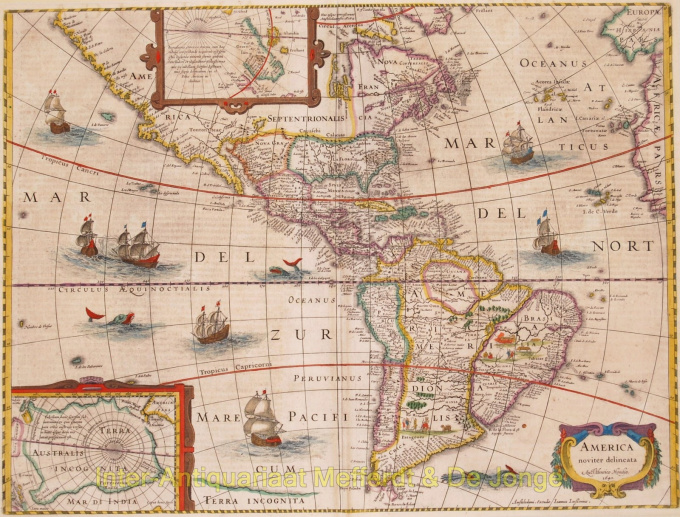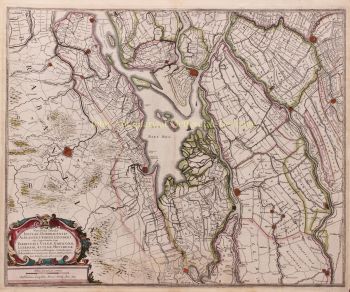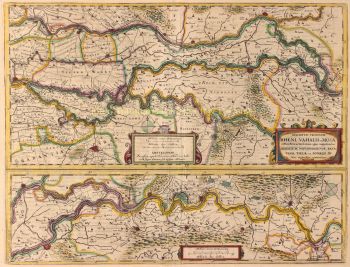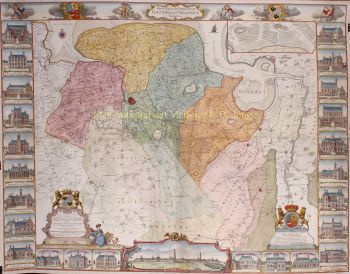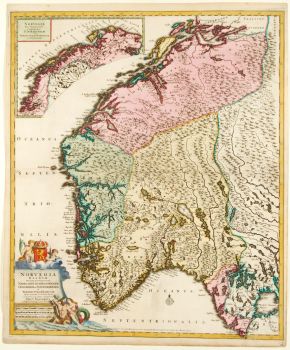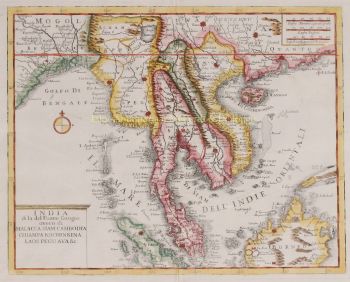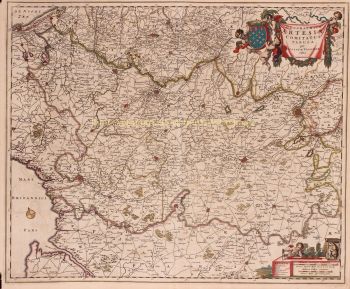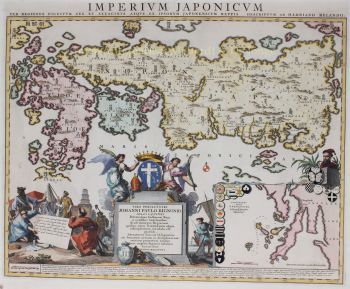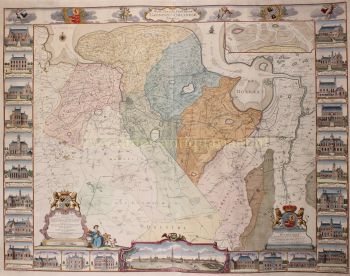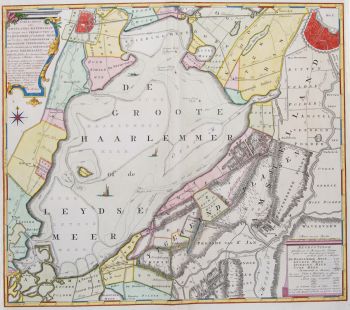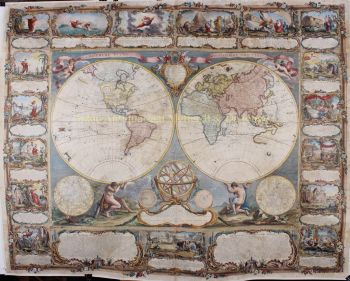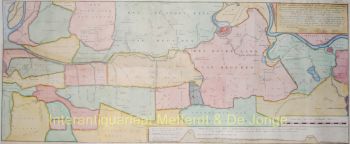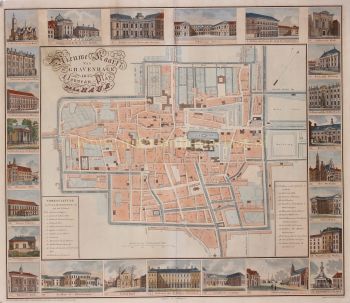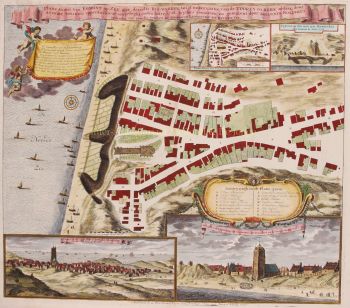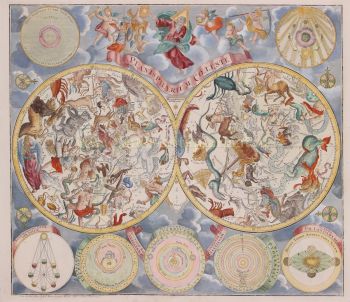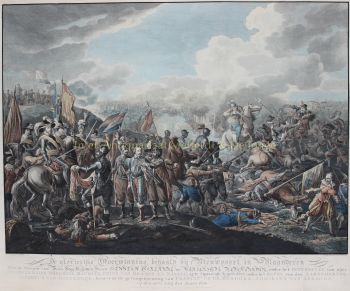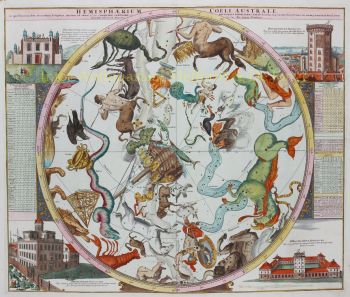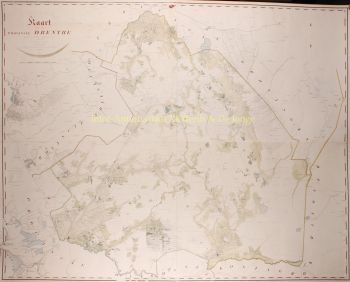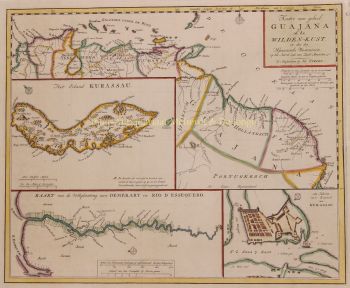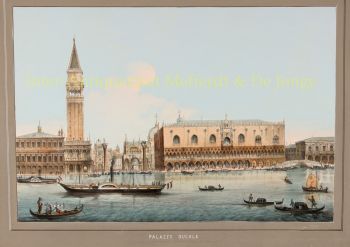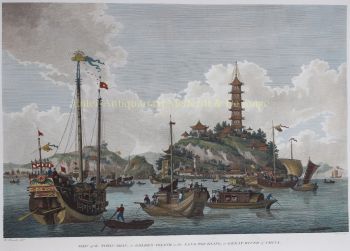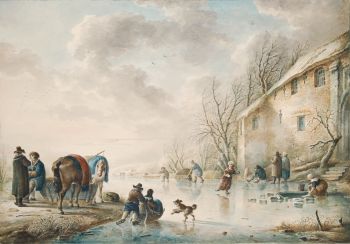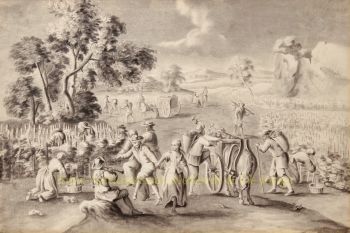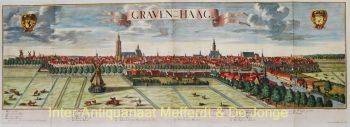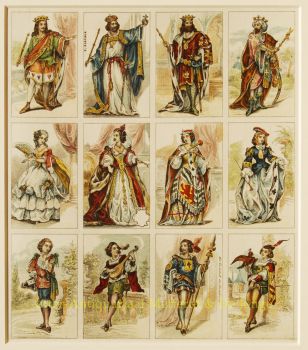America rare map 1641
Jodocus Hondius
€ 2.900
Inter-Antiquariaat Mefferdt & De Jonge
- About the artworkAmerica Noviter Delineata This important map was first published in 1618 by Jodocus Hondius. Cartographically, this map influenced a generation of cartographers and was the basis of understanding the Americas for the first half of the 17th century. When first issued the map was surrounded by four panels, figures on the sides and Views on the top and bottom. The plate was trimmed, removing the panels by Henricus Hondius c.1630. The map had a long life appearing in atlases up to 1665, This map is noted for its elegant engraving and pleasing layout, with fleets of ships and sea monsters, and two inset maps one showing the Arctic Circle and the other showing Greenland. The North Pole depicts Frobisher's theory of the Northwest Passage and the South Pole shows the long-held notion of the mythical southern continent. North America retains the peninsular California and the East Coast is beginning to take shape, although it still lacks detail in the mid-Atlantic region. In the Southwest the famous seven cities of Cibola appear on the banks of a large lake. In South America, there is a large inland sea and two engraved scenes, one of which details a cannibalistic feast. Two stylized insets of the two polar regions are enclosed in strapwork cartouches. Size: 37,5 x 49,8 cm (plus margins). The copperplate that produced this map was originally prepared by Jodocus Hondius Jr. in 1618. This issue, known in three examples, has decorative borders on all four sides. There is a 2nd state in c1629-30 with no decorative borders. A 3rd state was produced by Henricus Hondius in 1631. The map depicted here is the 4th state with the imprint of Janssonius and the addition of the date of 1641. There was a 5th state in 1652 with the date and the Hondius imprint removed. (Burden, p. 235-6). This map has German text on the verso describing America. This map is from Johannes Janssonius' Atlas of 1646-57 with a signature on the verso of "Aaa", based on van der Krogt (p. 715). An earlier version of this map was produced by Henricus Hondius in 1631. Through the collaboration between Hondius and Janssonius (they were brothers-in-law), Hondius' map was replaced by Janssonius' map in 1641. Henricus Hondius had died in 1638. Reference: Burden map #192. Size: 37,6 x 49,9 cm. Price: Euro2.900,- (excl VAT/BTW)
- About the artist
Jodocus Hondius (Latinized version of his Dutch name: Joost de Hondt) (17 October 1563 – 12 February 1612) was a Flemish and Dutch engraver and cartographer. He is sometimes called Jodocus Hondius the Elder to distinguish him from his son Jodocus Hondius II. Hondius is best known for his early maps of the New World and Europe, for re-establishing the reputation of the work of Gerard Mercator, and for his portraits of Francis Drake. He inherited and republished the plates of Mercator, thus reviving his legacy, also making sure to include independent revisions to his work. One of the notable figures in the Golden Age of Dutch cartography (c. 1570s–1670s), he helped establish Amsterdam as the center of cartography in Europe in the 17th century.
Hondius was born in Wakken and grew up in Ghent. In his early years he established himself as an engraver, instrument maker and globe maker. In 1584 he moved to London with his sister Jacomina to escape religious difficulties in Flanders. In 1587 in London he married Colette van den Keere, daughter of Hendrik, an engraver of metal type, and collaborated with her brother Pieter, also a mapmaker and engraver.
While in England, Hondius was instrumental in publicizing the work of Francis Drake, who had made a circumnavigation of the world in the late 1570s. In particular, in 1589 Hondius produced a now famous map of the bay of New Albion, where Drake briefly established a settlement on the west coast of North America. Hondius's map was based on journal and eyewitness accounts of the trip and has long fuelled speculation about the precise location of Drake's landing, now thought to be at Drakes Estero in California. Hondius is also thought to be the artist of several well-known portraits of Drake that are now in the National Portrait Gallery in London. Also Hondius had engraved charts in the Mariners Mirrour (1588) and the first English globes, those of Emery Molynex completed in 1592.[citation needed]
Hondius's (or his predecessors') use of multiple sources can be illustrated by this map of Asia, which shows Beijing three times: twice as Khanbaliq (Combalich in the land of "Kitaisk" on the Ob River, and Cambalu, in "Cataia") and once as Paquin (Beijing), in the prefecture of Xuntien (Shuntian)
In 1593 he, accompanied his wife and Pieter van der Keere, moved to Amsterdam where he remained until the end of his life. In co-operation with the Amsterdam publisher Cornelis Claesz in 1604 he purchased the plates of Gerard Mercator's Atlas from Mercator's grandson. Mercator's work had languished in comparison to the rival Theatrum Orbis Terrarum by Ortelius. Hondius republished Mercator's work with 36 additional maps (which were added to 107 original maps), including several which he himself had produced. Despite the addition of his own contributions, Hondius gave Mercator full credit as the author of the work, listing himself as the publisher. Hondius's new edition of Mercator's work was a great success, selling out after a year. Hondius later published a second edition, as well as a pocket version Atlas Minor. The maps have since become known as the "Mercator/Hondius series". Hondius was a cousin of Abraham Goos, and he taught Goos mapmaking and engraving.
In the French edition of the Atlas Minor we find one of the first instances of a thematic map using map symbols. This is a map entitled Designatio orbis christiani (1607) showing the dispersion of major religions.
Hondius used copper plates to print John Speed's atlas The Theatre of the Empire of Great Britaine, which was published in 1611/2.
Hondius died, aged 48 (1612), in Amsterdam. After his death, his publishing work in Amsterdam was continued by his widow, two sons, Jodocus II and Henricus, and son-in-law Johannes Janssonius, whose name appears on the Atlas as co-publisher after 1633.[8] Eventually, starting with the first 1606 edition in Latin, about 50 editions of the Atlas were released in the main European languages. In the Islamic world, the atlas was partially translated by the Turkish scholar Kâtip Çelebi. The series is sometimes called the "Mercator/Hondius/Janssonius" series because of Janssonius's later contributions.
Scholars have argued that the globes depicted in celebrated 17th-century painter Johannes Vermeer's 1668 The Astronomer and 1669 The Geographer were based on a pair of globes by Hondius. Close inspection of these two globes reveals striking similarities to a pair of globes made in 1618 by Hondius. The globes were made as pendants, one depicting the earth while the other depicted the constellations. In Vermeer's The Astronomer the scholar consults a version of Hondius' celestial globe and in The Geographer Hondius' terrestrial globe can be seen placed atop the back cabinet. A version of Hondius' celestial globe can be found in the Scheepvaartmuseum in Amsterdam and the terrestrial globe can be found in The Hispanic Society Museum & Library in New York City.
Are you interested in buying this artwork?
Artwork details
Related artworks
- 1 - 4 / 24
- 1 - 4 / 12

